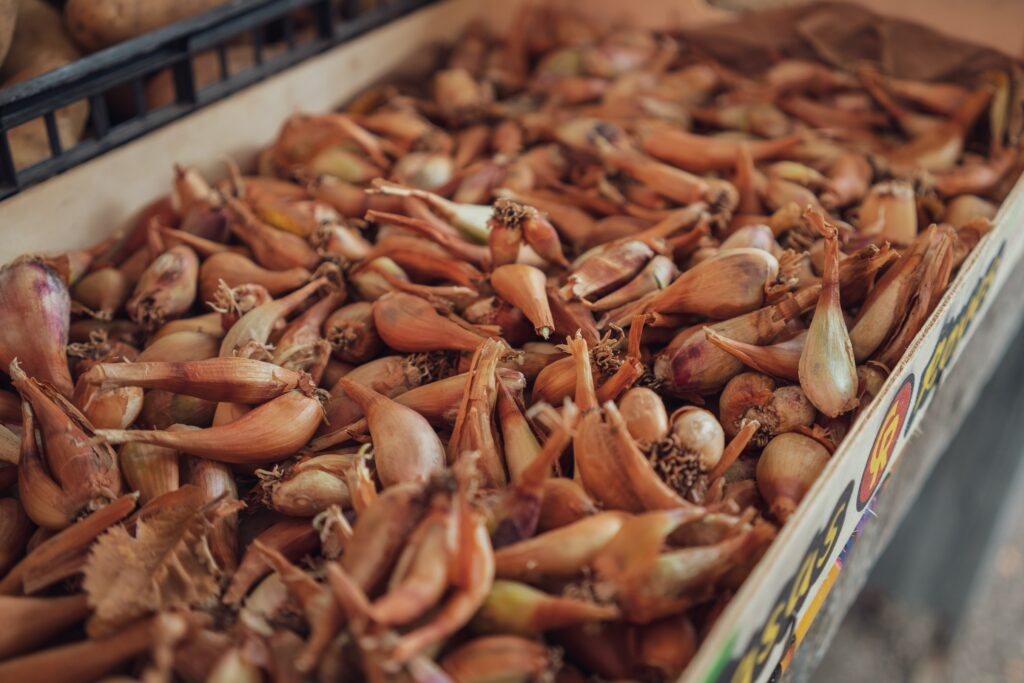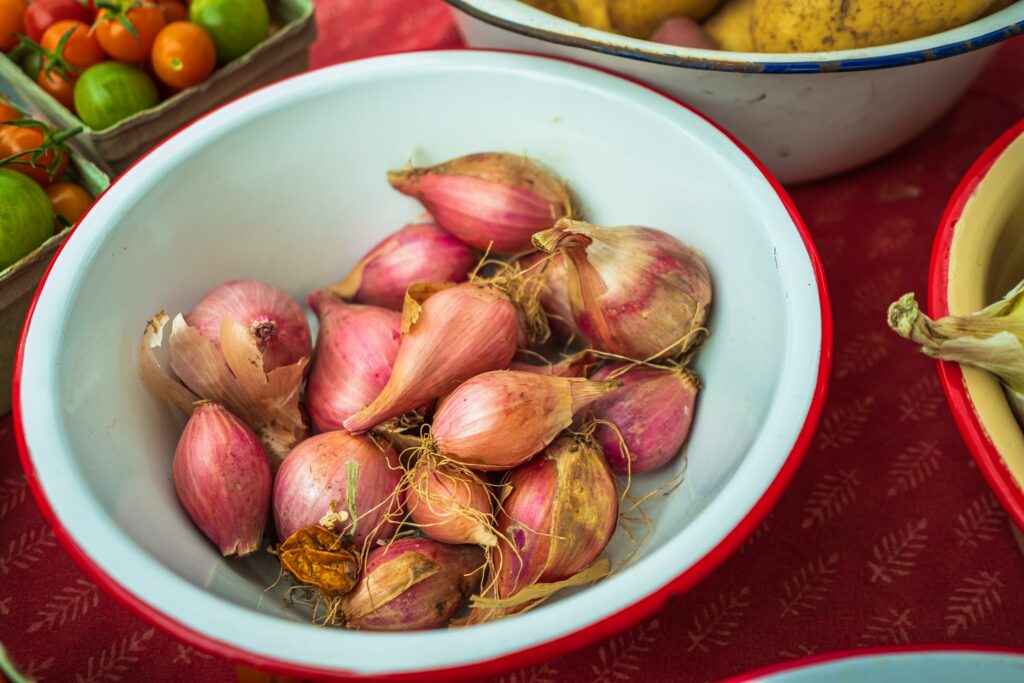Shallots are a member of the onion family, which also includes garlic, leeks, and chives. Their flavor is sweeter and milder than most onions, which makes them perfect for dishes where you want onion flavor but don’t want it to be overpowering.
Because of their mellow flavor, shallots are commonly used raw in vinaigrettes. But their unique internal structure makes them great for roasting–achieving a creamier, meltier caramelization than onions. They can also be breaded and fried, or pickled to use on tacos, salads, and sandwiches for a pop of flavor.
Similar to garlic, shallots grow in a cluster where there are multiple cloves on one plant. They can be started from seed or bulb.
Originally thought to have originated in Central Asia, shallots eventually made their way to India and the Mediterranean before becoming a staple in cooking around the world.

Shallot Pronunciation
Like many words, shallot is pronounced differently in various parts of the world. But in the US, the most common way to say shallot is SHA-luht (rhymes with ballot), with an emphasis on the first part of the word.
In British English, you are more likely to hear it pronounced sha-LOT, with the emphasis on the second part of the word.
Kinds of Shallots
As with most crops, there are several kinds of shallots that can be found in grocery stores and from local growers. Shallots are generally broken down into three types:
French Gray Shallot
This is considered by some shallot purists to be the only true shallot. It’s beloved by chefs and cooking professionals for its strong flavor and gets its name from the grayish tone of its skin. The flesh is a very light purple color and tends to grow in a more elongated shape than other shallots.
Jersey Shallot
These are the most widely available shallots in grocery stores in the US. With a rosy pink outside skin and long but slightly rounded shape, Jersey shallots have a powerful yet subtle flavor.
Echalion Shallot
Also known as Prisma or Banana shallots, these have some of the best traits of shallots and onions combined. Its larger size is more similar to an onion but has the signature nuanced flavor of a shallot. The skin is generally a copper-pink color and has a round shape. They are great for caramelization due to their perfect sugar profile.

How to Cut a Shallot
Just like onions and garlic, shallots are covered in a papery outer skin.
The first step to using shallots is always to remove the papery skin. The exposed flesh should be lighter in color and have a smooth texture. Cut off the root end and discard.
For rings: Starting at the top of the root end, make thin slices across the body of the shallot.
For slices: Slice the shallot in half, longways. Place the cut side down, and continue making thin slices longways. Do the same with the second half.
For finely diced: Slice the shallot in half, longways. Place the cut side down, and make 3-4 cuts longways. Then rotate the slices and cut across the slices, perpendicular to the cutting board.
Put your cut shallots to work with this Pickled Shallot recipe!
Find Shallots Near Me
Our Find Food & Farms directory is a great resource for finding local farms growing shallots. Just search “shallots” in the product search bar on the left side of the screen and enter your zip code to find local shallot producers near you!
When shopping for shallots, make sure they are firm to the touch to ensure the best quality.
Store your shallots in a cool, dark place. They can last a few months if stored properly. They don’t need to be refrigerated until they are cut.
Carrie Hause is the Digital Media Specialist for Taste the Local Difference. Contact her at [email protected].
